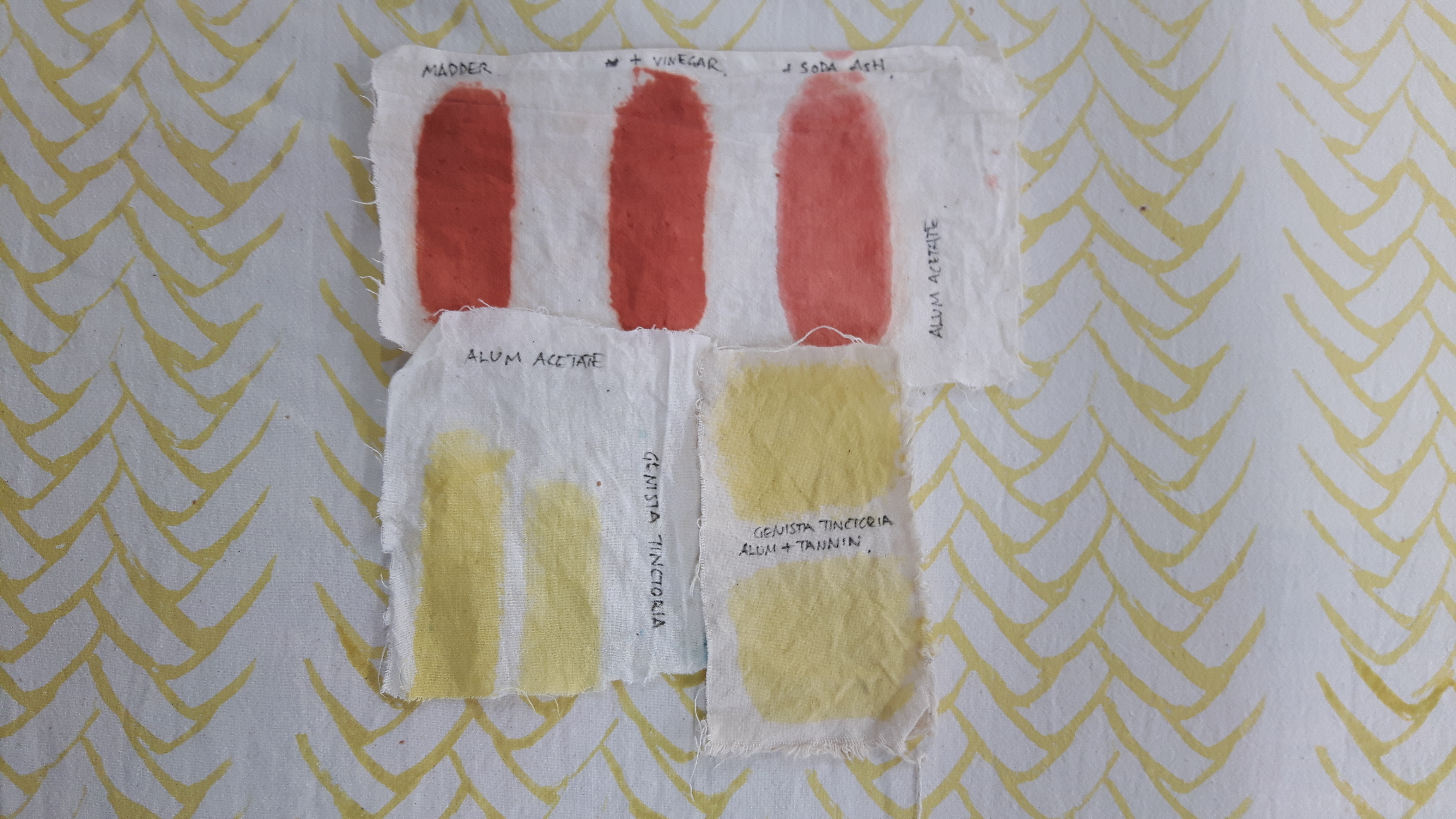Mordant printing and dyeing













Printed calicoes or ‘chintzes’ originated in India at least four thousand years ago. Indian craftspeople developed a sophisticated technique of applying mordants and plant dyes, to create beautiful multicoloured patterned cloths. Originally the designs were hand-painted, but later wooden blocks were used. These calicoes arrived to Europe during the end of the 16th century and became immensely popular. By the end of the 17th century printed calicoes had overtaken spices as the main commodity traded by The English East India Trading Company.
The threat to the domestic European textile industry was such that many countries introduced restrictions during the 18th century which effectively banned the import of most cotton goods from India (although re-export to other colonies was permitted).
Meanwhile, European textile industrialists set about appropriating the Indian techniques, and developing their own calico printing industry which used early industrial techniques such as copper plate printing. Indeed, Foucault writes vividly about the division of labour in the Oberkampf manufactory at Jouy-en-Josas as an example of the disciplining of the workforce in industrial society, in Discipline and Punish (1975).


These printed calicoes, produced in early industrial conditions in Europe, with plant dyes which included colonial commodities, became popular elements of Swedish regional costume. Therefore, despite eventually being appropriated under a national romanticisim, these peasant costumes demonstrated their connection with global colonial forces
I have developed techniques based on calico painting and woodblock printing for screenprinting, using mordant recipes from the master dyer, Michel Garcia. I use combinations of tannins, aluminium acetate, and ferrous acetate, printing with thickened dye, and immersions in dye baths. Calico printed with dyes are steamed afterwards so that they react with the mordants.
Headscarves are available for sale!
Headscarves are available for sale!